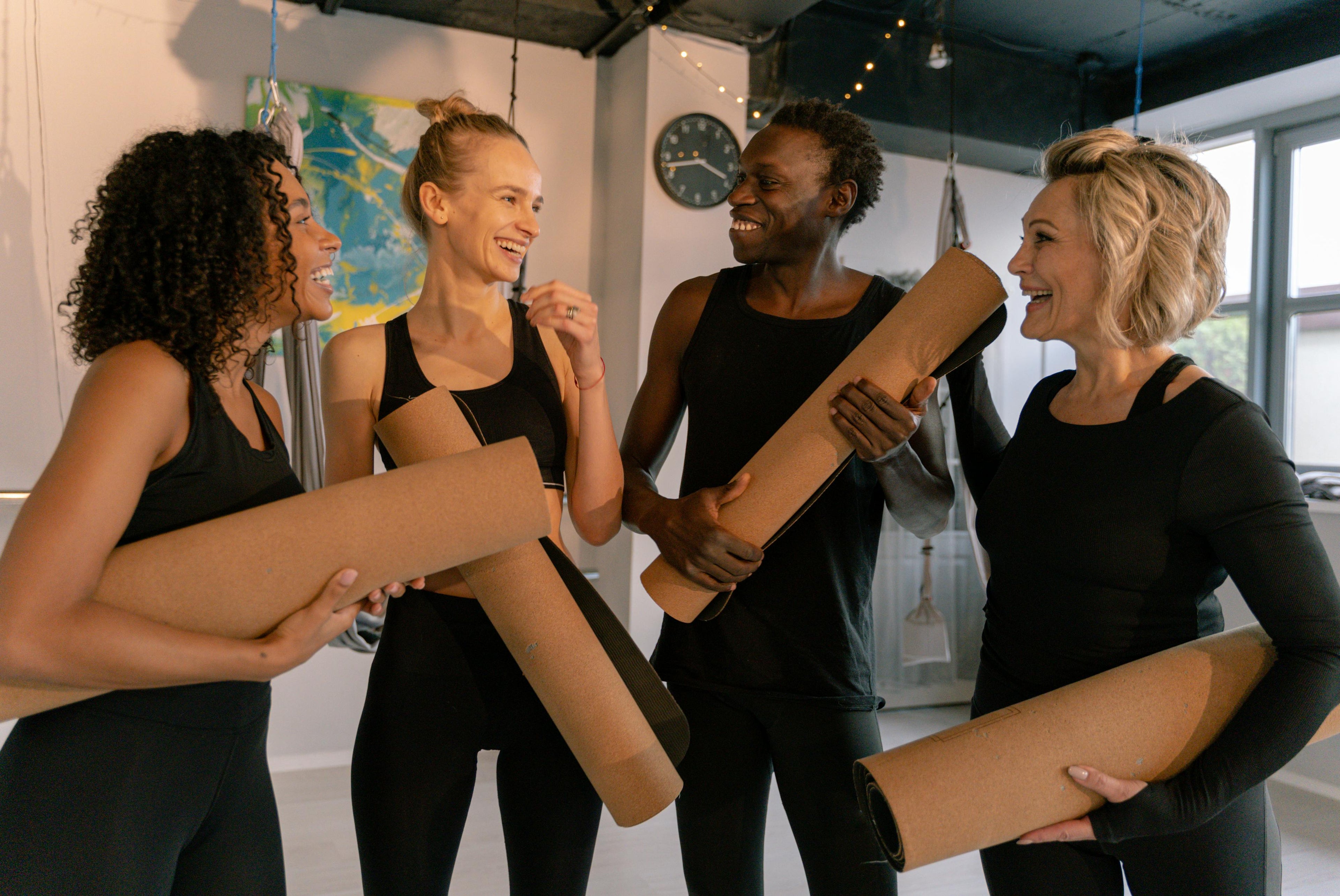The Hidden Power of Your Yoga Mat: What Every Practitioner Should Know

A yoga mat may look like a simple rectangle of foam or rubber, but its impact on your health, comfort, and progress as a practitioner is anything but minor. It is the foundation for every pose, every breath, and every moment of focus you bring to the mat. And yet, many practitioners overlook just how much the right (or wrong) mat can influence their body’s well-being and their overall experience.
This article takes a closer look at why your yoga mat matters more than you think. From joint protection to posture alignment and anti-slip stability, we’ll explore how these often-overlooked features are central to a safer, more effective, and more fulfilling yoga practice. If you’re serious about your body and your breath, your mat deserves the same attention.
Yoga Mat Support: Protecting Your Joints with Every Pose
Yoga involves a range of dynamic movements that apply pressure to your wrists, knees, elbows, and spine. Practicing on a poorly cushioned or overly firm surface can lead to discomfort and even chronic pain over time.
Here’s why joint protection matters:
-
Knees and elbows: These areas are vulnerable in poses like Tabletop, Low Lunge, or Forearm Plank. Without proper padding, repeated stress can cause inflammation or bruising.
-
Wrists: Downward Dog and Plank pose apply direct weight to the wrists. A mat with insufficient cushioning can cause or aggravate carpal tunnel issues.
-
Spine and tailbone: In seated or supine poses, a too-thin mat may not insulate your back from the hardness of the floor.
What to look for in a joint-friendly yoga mat:
-
At least 5mm thickness for gentle shock absorption
-
High-density, durable foam or eco-TPE material
-
Balanced softness that cushions without destabilizing
👉 The Lotus Yoga Mat is engineered with enhanced density and rebound, providing the ideal cushioning to protect your joints without sacrificing balance.
Yoga Mat Alignment: Improve Your Posture, Improve Your Practice
Body alignment is the foundation of safe and effective yoga. If your mat contributes to uneven footing or unstable placement, it can subtly disrupt your form, increasing your risk of injury.

Why yoga mat alignment support matters:
-
Postural awareness: A stable surface allows for better proprioception—your body's sense of position in space.
-
Symmetry: A warped, curled, or sliding mat can make your posture imbalanced, leading to poor muscle activation.
-
Consistency: Repeating misaligned movements can develop into long-term postural habits.
Tips for better alignment through your mat:
-
Choose mats with anti-curling corners and a flat, grippy base
-
Opt for alignment guides or center lines if you're a beginner
-
Use a mat that stays firmly in place during transitions
🧘 The Lotus Yoga Mat features a non-slip bottom layer that anchors you to the floor and a smooth surface that helps you position yourself precisely in every pose.
Yoga Mat Grip: Stability Is Strength
Slipping in Downward Dog or wobbling during Warrior II isn’t just annoying—it can be dangerous. Without reliable grip, your practice becomes a game of catch-your-balance, not flow and control.

Why anti-slip grip is essential:
-
Safety: Prevents sudden slips, especially in hot yoga or sweaty sessions
-
Confidence: Encourages full engagement in each pose without fear
-
Focus: Keeps your mind on your breath—not on whether your hands will slide
Key features of a safe, grippy yoga mat:
-
Textured top surface for hand and foot traction
-
Moisture-absorbing or water-resistant material
-
Anti-skid base to prevent shifting
💡 Pair your mat with the EVA Massage Roller PRO to loosen tight fascia and increase your body’s contact stability before each session.
Small Details, Big Difference: Other Yoga Mat Features to Consider
Besides the major points above, the right yoga mat can also improve your lifestyle and consistency by offering:
-
Portability: Lightweight and easy to roll up for on-the-go wellness
-
Sustainability: Made from eco-friendly or biodegradable materials
-
Durability: Withstands wear from daily practice without flaking or crumbling
🌱 The Lotus Yoga Mat is made with non-toxic, eco-conscious materials—good for your body and the planet.
Q&A: Yoga Mat Essentials
Q1: Is a thicker yoga mat always better?
A: Not always. Too much softness can compromise balance. Look for mats with high-density foam that cushion without causing instability.
Q2: Can beginners use professional-grade yoga mats?
A: Absolutely. In fact, starting with a high-quality mat can prevent injury and improve your learning curve.
Q3: What makes a yoga mat truly non-slip?
A: It’s a combination of surface texture, moisture resistance, and bottom-layer grip. Try to test it barefoot before buying if possible.
Q4: How often should I replace my yoga mat?
A: If you practice 3–4 times a week, consider replacing your mat every 12–18 months or when you see signs of wear.
Q5: Can I clean my mat with household cleaners?
A: Avoid harsh chemicals. Use gentle soap and water or a yoga-specific mat spray. Always let it air dry completely.
Final Thought: Your Mat, Your Foundation
A yoga mat might look like a simple accessory—but in truth, it’s the foundation for every movement, every breath, every moment of stillness. Choose it with care, and it will support you in ways you didn’t even realize you needed.




Leave a comment
All comments are moderated before being published.